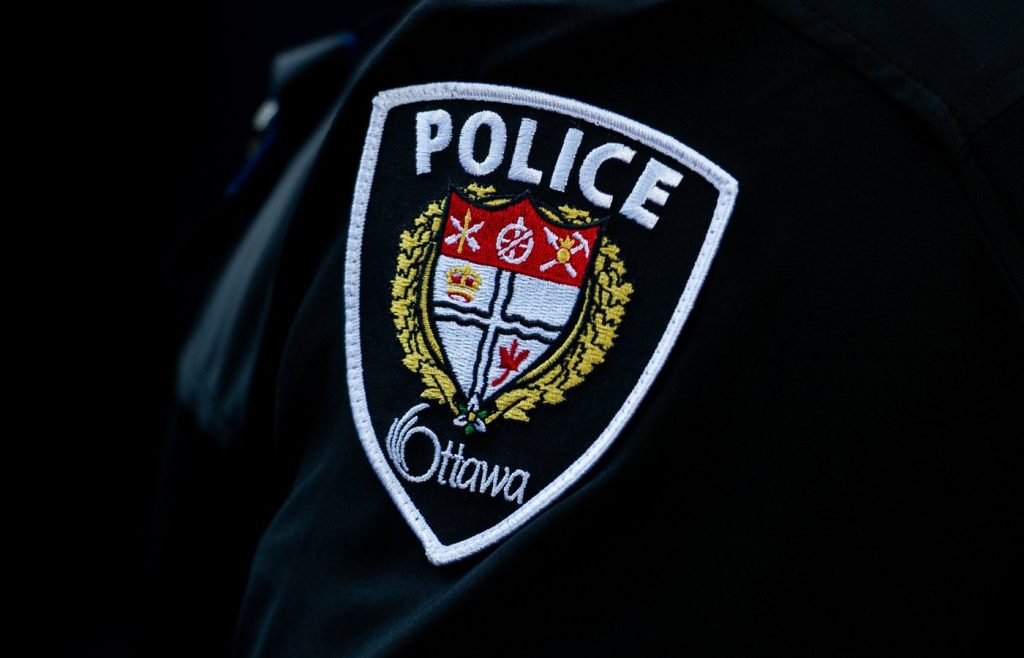Remember This? The sad story of ‘Punch’ Lavigne and ‘Billy’ Seabrooke
Posted Jan 9, 2023 01:25:00 PM.
This sorry tale began on Dec. 12, 1931. Paul Émile “Punch” Lavigne, age 24 years, was working the evening shift at the Domestic Service Station on Sussex Street, close to Redpath Street. (This is roughly the location of Foreign Affairs’ Lester B. Pearson Building today).
This wasn’t Lavigne’s usual work shift. He had swapped shifts with his friend and co-worker, Joe Meloche, who wanted to go to the Ottawa Auditorium for the wrestling. Gus Sonnenberg, the ex-world champion, was up against George Vassel, the “Grappling Greek,” in the feature bout.
Lavigne arrived for work at 7.20pm. Meloche handed Lavigne $47, the receipts for the day, and left the station at 7:30pm. Lavigne stuffed the cash in his pocket. A short time later, Hector Charbonneau, a truck driver, one of several who used the service station as an operating base travelling between Ottawa and Montreal, came into the station’s office and talked briefly to Lavigne before leaving. All was quiet. All was well.
At roughly 8:45pm, a young man wearing a brown overcoat and a brown hat walked into the station. Lavigne thought the man was going to use the telephone, a not uncommon occurrence, and went downstairs into the basement of the garage where supplies were kept. When Lavigne returned up the stairs a few minutes later, the stranger pointed a pistol at him and demanded money. Lavigne refused and grabbed the man’s wrist. In the ensuing struggle, the gun discharged, a bullet struck Lavigne in the upper abdomen. He fell to the floor critically wounded. The assailant rifled his pockets, took the cash, and then calmly walked out of the station. He then hopped in a taxi idling about 100 feet away, and was driven away from the scene of the crime.
The taxi driver, Oscar Paquette, who had been sent to the corner of Sussex and Redpath by his dispatcher, was hard of hearing and hadn’t heard the shot fired. The man who got into his car told him that he had ordered a taxi from a different company, but said that Paquette might as well take him. The young man spoke English without an accent. He got into the front seat of the taxi beside the driver. They didn’t go far, just to the corner of Cumberland and Boteler Streets—a 50-cent journey. When Paquette was unable to change a $2 bill, his passenger went into a nearby grocery store for change. When he left the store, the man brushed past a girl who was just entering. She didn’t pay him much attention. After paying Paquette, the man walked down Boteler Street towards King Edward Avenue where he was seen by two young girls. Paquette, believing that he might have another fare waiting, returned to the corner of Sussex and Redpath Streets.
At the same time, Richard Bingham, who was walking on Sussex, saw Paquette’s taxi idling. Owing to recent robberies in the neighbourhood, he took note of the licence number. Shortly afterwards, Bingham heard a gun shot and saw a man leaving the gas station and get into the taxi.
Lavigne staggered through the door of the gas station after his assailant and collapsed on the ground. Bingham rushed over to him. He tried to flag down a car to get help. The first passing car didn’t stop. The driver of the second refused to take the injured man to hospital but promised to drive uptown and get the police. Not wanting to wait, Bingham ran across the street to 160 Sussex Street, the home of J.A. Larocque, to call the police and an ambulance.
Lavigne was conveyed by ambulance to the Water Street General Hospital with Dr. Laframboise in attendance. On the way to the hospital, Lavigne told the doctor what had happened.
After a blood transfusion, Lavigne received an emergency operation in a desperate bid to save his life. The .32 calibre pistol bullet had entered the lower side of his chest below the diaphragm, perforated his intestines, and had nicked an artery before exiting Lavigne’s back. The slug was found caught in his clothes. The shell casing was later found at the scene of the crime.
For a short time, Lavigne rallied. Despite being in great pain, he was able to give a statement to Detective Jean Tissot. (A few years later, Tissot was fired from the Ottawa police force for circulating fascist literature and criminally libeling Archibald Freiman, the owner of Freiman’s Department Store.) Lavigne recalled that when he fell to the floor after being shot, he saw that his assailant was wearing buckled shoes. Shown a photograph of a man, he identified the person as his assailant though the man had no connection to the crime.
Paul Émile Lavigne, known as “Punch” by his many friends and co-workers, died a short time later in the early morning of December 14th, his family by his side. He was buried in Notre Dame Cemetery after a funeral at the Basilica. There were hundreds of mourners, including his grieving mother, his brothers Lucien and Albert, and sisters, Alice and Edith.
Ottawa police officers were initially baffled by the crime. While the presumed assailant had been seen by many, the description provided—mid to late 20s in age, roughly five feet eight inches in height, average build, wearing a brown overcoat and a brown fedora hat—could apply to many young Ottawa men. A $1,000 reward for information leading to the arrest and conviction of Lavigne’s assailant ($500 provided by the City and $500 by Lavigne’s employer) was posted in an effort to shake people’s memories.
Police quickly got two breaks in the case. First, Montreal police received a report that an Ottawa man, William “Billy” G. Seabrooke, had stolen a rifle and automatic pistol from Roy McGregor, formerly of Ottawa. Seabrooke, who had been visiting McGregor in Montreal, had apparently left without saying goodbye a few days before Lavigne’s shooting, taking the weapons with him. McGregor had not called the police immediately hoping that Seabrooke might return. But when he heard of the gas station shooting in Ottawa, he worried that his missing pistol might have been used.
The second break in the case came after Christmas when two teenagers, Denis Mirabelle, 14, and Richard Falconer, 15, found a pistol in a leather shoulder holster lodged between rocks on the second pier of the CPR bridge over the Rideau River near the north end of King Edward Avenue. This was only a short distance from the scene of the crime. The boys brought the pistol home and showed it to Mrs Falconer, Richard’s mother. She told them to take it to the police station which the boys did, the gun hidden under Richard’s coat. Fortunately, they did so without incident; the pistol was loaded without the safety on. The weapon, with serial number 674493, was a .32 calibre automatic pistol made by the Herstahl Military Armoury of Belgium. It was an illegal weapon in Canada. Roy McGregor later identified the pistol and holster as the ones stolen by Seabrooke.
In an interview with the Citizen, Roy McGregor said that he and Seabrooke had been friends since their early teens, and that after his move to Montreal, Seabrooke had come several times to visit, always staying with him. McGregor said that Billy Seabrooke was a nice fellow. It was only recently that he had done things that had caused trouble.
Police brought William Seabrooke in for questioning. A search of his bedroom revealed a pair of black, buckled shoes.
Seabrooke, who was only 22 years of age, came from a good family who lived at 125 Spruce Street in Ottawa. Known as “Bill” or “Billy” to his friends, he was popular and had been a paper tester in the Eddy factory in Hull. He had had one prior brush with the law. Just before Christmas he was in police court for obtaining money under false pretenses when he bounced a $15 cheque. The charge was, however, withdrawn when the “matter was adjusted.” Presumably, he found the funds to cover the cheque.
The police told Seabrooke that he was wanted for the theft of the guns in Montreal. However, they didn’t inform him that he was also a suspect in the murder of Paul Émile Lavigne until after he had been questioned. Without counsel present, Lavigne admitted stealing the weapons. He said he pawned the rifle for $8 in Montreal, an act later confirmed by the pawnbroker who identified Seabrooke as the seller. As for the pistol, Seabrooke said he threw it away in an alley near Bonaventure Station in Montreal. But when police showed him the pistol found by the two boys, he said: “That looks mighty bad for me.”
Richard Bingham, who had witnessed the assailant leave the gas station, Oscar Paquette, the taxi driver who drove the suspect away from the scene of the crime, Phileas Bisson who changed the suspect’s $2 bill at his grocery store, as well as the girls who saw the suspect walk down Boteler Street, were all brought in to identify Seabrooke. However, none were able to pick Seabrooke out of line-ups.
When asked what he had been doing on the night of murder, Seabrooke said he had gone to the Français Theatre where he watched Clare Bow in a film, and a western called 'Cheyenne'. However, he had nobody to vouch for him. Leaving the cinema at about 10:00pm, he said that he boarded a streetcar, where he heard a car employee talking about a shooting. He then taxied to the Montcalm Club in Hull before taking a room for the night under the assumed name “Kingsbury.” The next day he returned to Ottawa and visited the gas station where Lavigne was killed before going home.
Dr. Rosario Fontaine, the medical expert for Québec and an authority on ballistics, carried out tests on the slug that had killed Lavigne and the shell that had been found at the gas station. Dr. Fontaine positively identified the gun found by the two boys as the weapon that killed Paul Émile Lavigne.
William Seabrooke was sent to trial in front of Justice Logie in May 1932. His defence counsel was Walther F. Schroeder, a young Ottawa lawyer. Colonel J. Keiller was the Crown prosecutor.
The Crown focused importantly on Seabrooke’s admission that he had stolen a pistol from Roy McGregor who in turn positively identified the weapon found by the two boys as his own, and the ballistics evidence that concluded that it was the murder weapon. The Crown also made much of the fact that a previously broke Seabrooke had come into money, and was able to hire taxis, go drinking in Hull and afford to stay in a hotel.
The defence stressed that none of the witnesses of the events of Dec. 12 could identify Seabrooke despite have been very close to the suspect. Seabrooke, at only 5 foot 4 inches tall, was shorter than the description of the assailant. Moreover, the buckled shoes described by Lavigne on his deathbed could have been owned by anyone. As for the pistol, there was nothing linking the weapon to Seabrooke after Montreal.
While Seabrooke’s young lawyer put up a stout defence, it was not enough. Even though the evidence was only circumstantial, William Seabrooke was found guilty by the jury after two hours of deliberation. Justice Logie then pronounced the death sentence to a crying Seabrooke. When the judge said “May God have mercy on his soul,” Seabrooke interjected: “He will.”
Seabrooke’s lawyer immediately launched an appeal on several grounds, including bias on the part of the trial judge who gave an unbalanced summary to jury members before their deliberations. The Court of Appeal, very critical of the actions of the trial judge as well as those of the Ottawa Police Service who did not inform Seabrooke that he was a suspect in Lavigne’s murder before he was questioned, ordered a new trial.
The second trial took place in October 1932. Again, Walther Schroeder appeared for Seabrooke with Colonel Keller acting as Crown prosecutor. Although the judge ruled that Seabrooke’s answers to police questions were inadmissible as they were improperly obtained, the jury once again concluded that Seabrooke was guilty of murder. When asked if he had anything to say, Seabrooke reiterated: “I did not do this.”
The $1,000 reward for the conviction of the murderer of Paul Émile Lavigne was divided four ways, with $250 going each to the Montreal pawnbroker who identified Seabrooke as the person who pawned the rifle he stole from Roy McGregor, the two young boys who discovered the pistol, and Roy McGregor who informed police of the pistol’s theft and subsequently identified the pistol found by the boys as his own.
When a plea to the federal Justice Minister for a commutation of sentence to life imprisonment failed, this sad story came to an end. William 'Billy' Seabrooke was executed at 12:50am on Jan. 10, 1933 on the same gallows used to execute Patrick Whelan for assassinating D’Arcy McGee in 1869. Unused for more than 60 years, it took workmen two days to put the gallows in working order. A small crowd gathered outside of the Carleton County Jail to watch the black flag hoisted indicating that the sentence had been carried out.
Seabrooke died with dignity, maintaining his innocence to the end. Before his execution, he said to Sheriff Samuel Crooks and Governor Alonzo Dawson: “Don’t worry. I will be all right.”
Seabrooke’s body was buried by his family in a private ceremony in Beechwood Cemetery.








